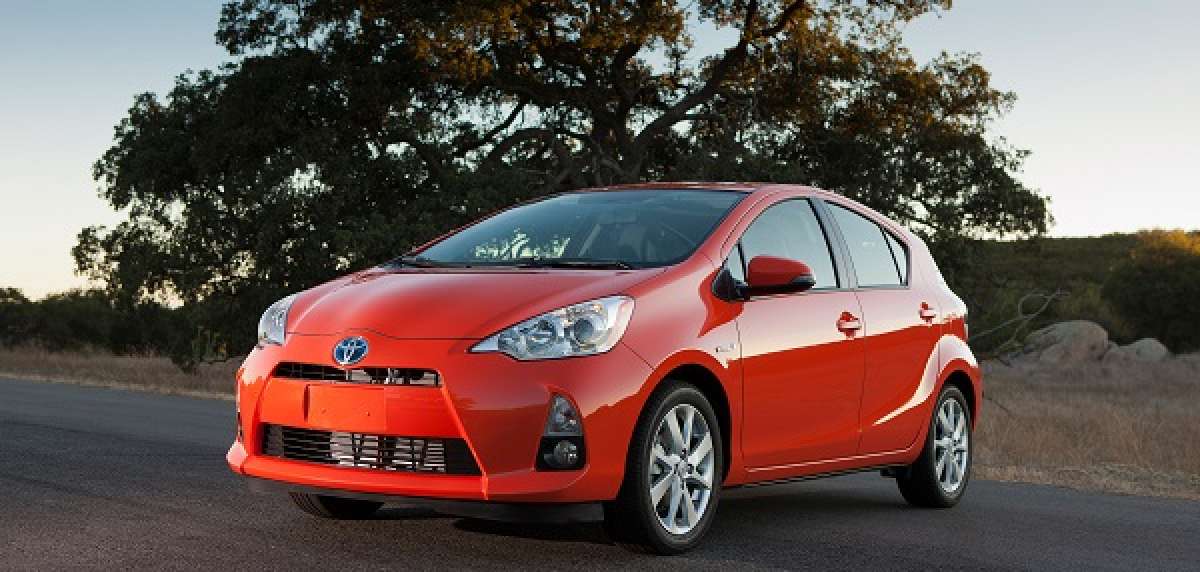When it was first tested in 2012 the Insurance Institute for Highway Safety (IIHS) awarded the Prius C “Top Safety Pick” status. Now, with the addition of one new IIHS test shoppers are expected to believe that the car is somehow less safe. The 2014 Prius C recently was tested and did poorly on the new crash test called small frontal overlap. This new test is very aggressive and the National Highway Safety Administration does not even conduct it. Of eleven cars its size that were tested, none were given a “good” rating. Four out of ten scored marginal. Six scored poor like the Prius C. Shoppers should make up their own mind about the importance of the test to them, but some background might give the decision some perspective.
For years IIHS rated cars based on a set of crash tests. Over time all of the cars tested started to ace them, and the term “Top Safety Pick” started to become very common. Car designers had taken note, made modifications to their cars’ structures during redesign cycles, and for the most part all cars did quite well. So why do we need the IIHS?
Then IIHS came up with an entirely new test. Many luxury cars known as being safe were rated poor. The media took note and IIHS was back in the spotlight again and relevant once more. Some cars that are considered to be the safest in the world have not even been tested this way. The Tesla Model S for example has never undergone this test. Tesla has yet to have a fatality in one of its cars.
We don’t mean to imply that the test has no meaning. We have called out larger Toyota vehicles that should have made it to the design cut-off for having done poorly. However, when more than half the cars tested in a given class are rated poor, and none are rated good, it sure makes it hard to skip a model one has their heart set on. Toyota in particular has been caught out by the new test. The RAV 4, Corolla, and Camry all had disappointing results. Camry was redesigned and then passed. We expect that the next redesign of the Prius C will result in a better test, but there is no guarantee and we are at least 18 months from seeing that car in dealerships. There is also no guarantee that the IIHS won’t come up with yet another new test that trips up car makers by then.
Frankly, the Prius C is a very small car. If safety is a primary concern this really is not the segment to be shopping in to begin with. Remember, all crash tests are relative. There is no frontal crash test in which a test car is struck by a Ford F-150, the most common nameplate in America. Rather, cars are crashed into a deformable barrier and their own kinetic energy imparts the damage. Draw your own conclusion about the Prius C’s safety, but if you are set on buying a car this small it is hard to overlook the benefits of the Prius.
Here is the original IIHS Rating Video of the Prius C






Comments
"and none are rated good," ..
Permalink
"and none are rated good," ....
Perhaps that's why people who ARE concerned about safety at all don't drive mini cars.
When we were younger, we used to joke when we'd pass a Pinto on the road and say, 'Danger, Unexploded Pinto' like they were rolling bombs.
'We don’t mean to imply that the test has no meaning.' - which is exactly what you're doing by phrasing it this way. This test was designed to simulate real world crash experience. Do people still run into brick walls or have full head on collisions? Sure, they do. That's what NHTSA tests for. But with more than 25% of all collisions now being into bridge abutments, telephone poles, or other, non full head on collisions - this makes the IIHS test have MORE meaning than just running head on into a wall.
Thanks Carl, you put this
Permalink
Thanks Carl, you put this into good perspective.